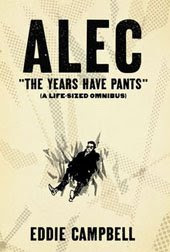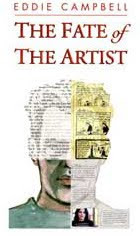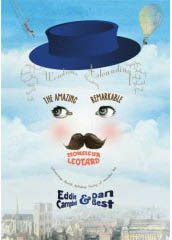
The first part of the PBS series, How Art made the World aired here on Australia's ABC last night (I realise it's a couple of years old by now and everybody else has probably already seen it).
Dr. Spivey takes viewers on a quest to comprehend mankind's unique capacity to understand and explain the world through artistic symbols. Speaking in colorful, non-technical language and aided by state-of-the-art computer graphics, Spivey explores the latest thinking by historians, neuroscientists and psychologists regarding the deep-seated and universal human desire to create art.In this first part he looked at people's evolving concept of the human body, starting with the 25 thousand year old 'Willendorf Venus' (left) and finishing by rather confidently declaring the two thousand four hundred and fifty year old Riace Warriors (below) to be the greatest sculptures ever made. It's daft to say that since most of them that were made were long ago destroyed and we don't know what they looked like. It would be more acceptable to say they are all that we have left of the greatest moment in the history of sculpture, and that we only have them by dint of the extarordinary accident of their being on a shipwreck proabably before the Roman era, and of a snorkler seeing a bronze hand poking out of the sea bed off the coast of sounthern Italy as late as 1972. We cannot even guess who, out of the catalogue of names of the great Greek sculptors (whose works that still stood in Roman times were noted and described), could have made them, with their inlaid eyes and nipples and other extraordinary details, and whether all of this was once commonplace. One thing is certain, that such a peak could never have been reached without artists building upon each others achievements.


Here's a round-up of most of the life-size Greek bronzes that have survived, which is a very small number. We have to otherwise depend on the copyists in marble of the Roman era for our knowledge. And that is not to be sneezed at; to stand close to the full size marble copy of the Diadumenos by Polykleitos in the British Museum is to be humbled. But you must stand within its personal space. You can easily google it and get a long shot that looks like a guy on the other side of the street you're trying to avoid. Get close, like the photographer above, and check the closing forms of the hands and wonder how on earth the artist got his little chisels in there.
Labels: art (2)














6 Comments:
http://www.dailygrail.com/news/arthur-c-clarke-passes-away
The greeks and romans used to use little curved chisels so they could chisel around corners.
Must be something to do with hormones: I was having the hardest time finding the hand on that last picture...
Yes, that's a splendid pair of buttocks.
I was always fascinated by the detailed folds on the clothing of the headless goddess from the Parthenon marbles. Whatever the legality of the issue, it's great being able to see those so close.
Adam, et al.
our pal drjon is rounding up links to Arthur C. Clarke tributes :
http://drjon.livejournal.com/1118348.html
Not only "got his little chisels in there", but did it without shattering the stone.
Post a Comment
Subscribe to Post Comments [Atom]
<< Home